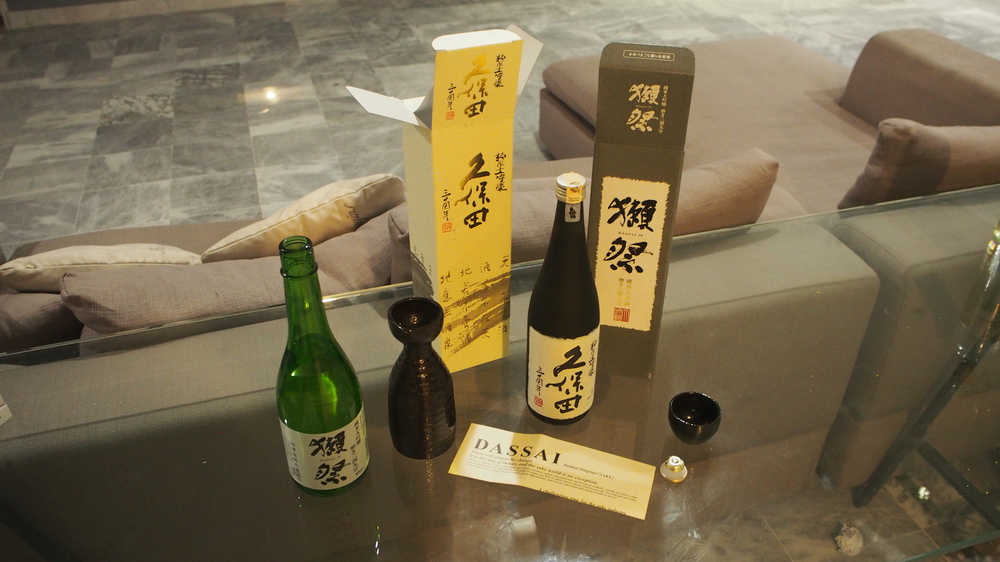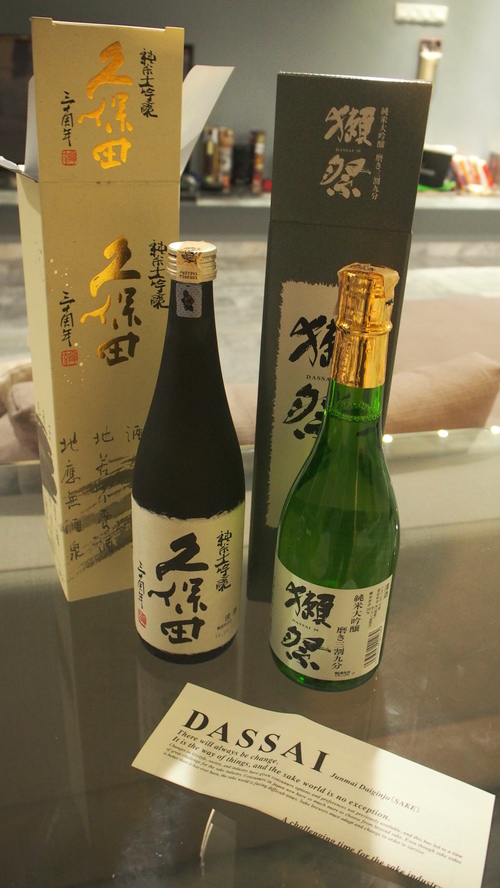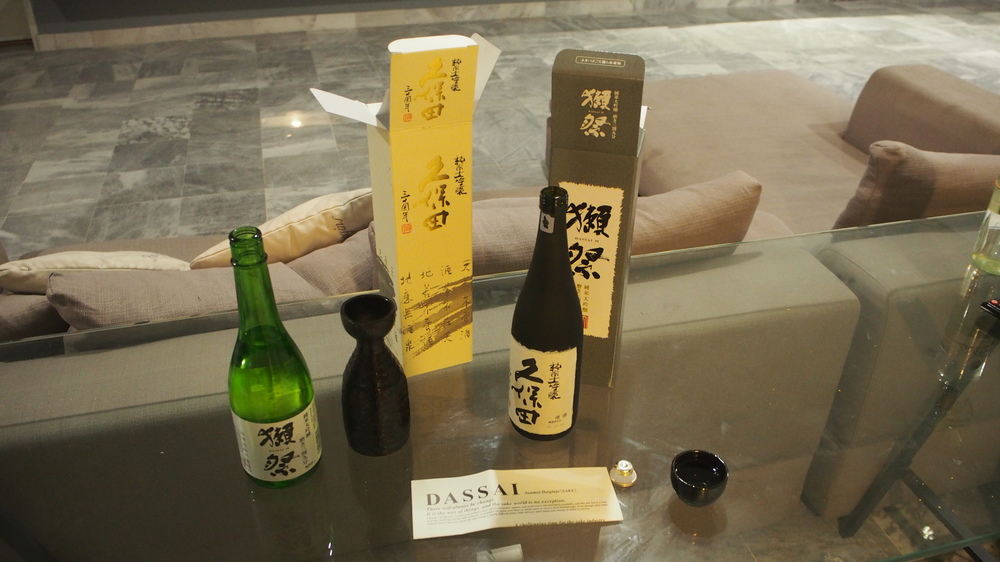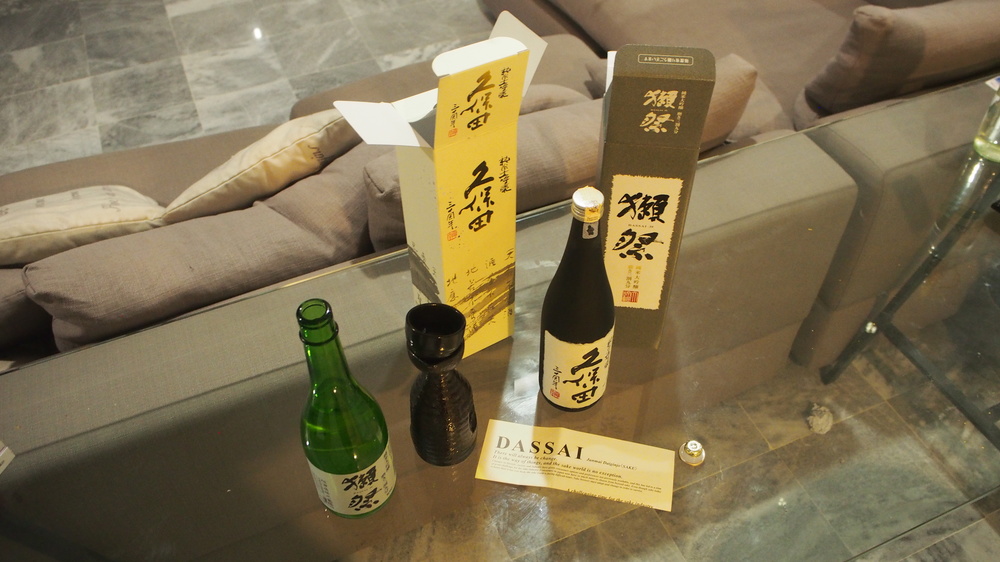Douglas Dragons at Dark
March 25th, 2024
Simon Willmore, editor of EatDrink.my, tries a new online sake delivery service. This post is brought to you in part by Fuji Pacific online store.

As I open the small brown cardboard parcel before me, I try to make sense of the beautiful yet unintelligible (to me) writing on the two boxes inside.
I open the silver-coloured box – mainly because it is the only option that contains some writing I understand, the label saying DASSAI 39, and take out the slip of paper inside.
The paper reads:
“There will always be change. It is the way of things, and the sake world is no exception.”
Well I can definitely attest to this, because this for me, this is a big change; it’s the first time I’ve had sake, the Japanese rice wine, delivered to my door.
 I take the two bottles out of their packaging; one is, as stated by its outer label, a Dassai 39 – Dassai being the brand name and 39 representing the quality of the drink.
I take the two bottles out of their packaging; one is, as stated by its outer label, a Dassai 39 – Dassai being the brand name and 39 representing the quality of the drink.
Sake, unlike most other wine, is not made by fermenting sugar, which is found naturally in grapes, into ethanol.
Instead, its maufacture process is more similar to beer production, where sake is produced by brewing so that the starch in the rice is converted into sugar and then into alcohol.
Therefore, the number represents that quality of the booze because it represents the percentage that the rice was milled at the start of the process. Here, a rice milling of 39%, is the second-best level after 23%.
As such, I am assured that 39 sakes have a smooth taste and clean, refreshing finish.
I will check this claim in a moment after I open the remaining box. This one, yellow in colour, contains a Kubota sake – and a special one at that. This bottle contains Kubota’s 30th Anniversary Sake, a Jyunmai Daiginjyo grade drink, which is one of the highest levels of sake quality.
It’s time to get stuck in, and fortunately I have just the equipment to do these drinks justice; a traditional tokkuri, which is the porcelain bottle that is often used when sake is drunk at ceremonies in Japan, plus the small traditional porcelains cup called sakazukis.

The Dassai is indeed crisp and refreshing, and has a hint of sweetness. The Kubota is well-balanced and fruity, and has a really smooth and clean finish. My housemates, and fellow taste testers for the evening, agree.
We happily spend the next few hours talking about how are our respective days have gone and our plans for the weekend, all the while sipping the drinks.
It’s very easy to understand why so many Japanese can get through crates and crates of the stuff. At one point, I feel weirdly compelled to go to a karaoke night.
Fortunately, I manage to fight off the urge to go and belt out some power ballads and start to tidy up the now-empty bottles.
As I am tidying, I see that slip of paper once more – and I realise I never learned what Dassai means (if anything).
It seems only fair that I try to find out the translation of the only world I could read a few hours previously and so reopen the paper.
On the back, the document explains:
“‘Dassai’ means ‘otter festival’.”
Already, this is wonderful enough for me in its own right. But Dassai has an even deeper meaning; it also represents an area in Yamaguchi province, where otters were often seen swimming in local rivers.

Even better, a Japanese poet named Masaoka Shiki used to refer to himself as Dassai, because he would leave his belongings all over the room, much like otters would scatter their fish all over the riverbank.
I pause for a moment and stop tidying, leaving the packaging on the table. I decide I’ll clean up properly in a moment; but for now, I’m going to finish my sakazuki of sake. It’s what Masaoka Shiki would have wanted.
Dassai 39, priced RM60 for 300ml, and Kubota 30th Anniversary Sake Jyunmai Daiginjyo, priced RM135 for 300ml, are available from FujiPacific.